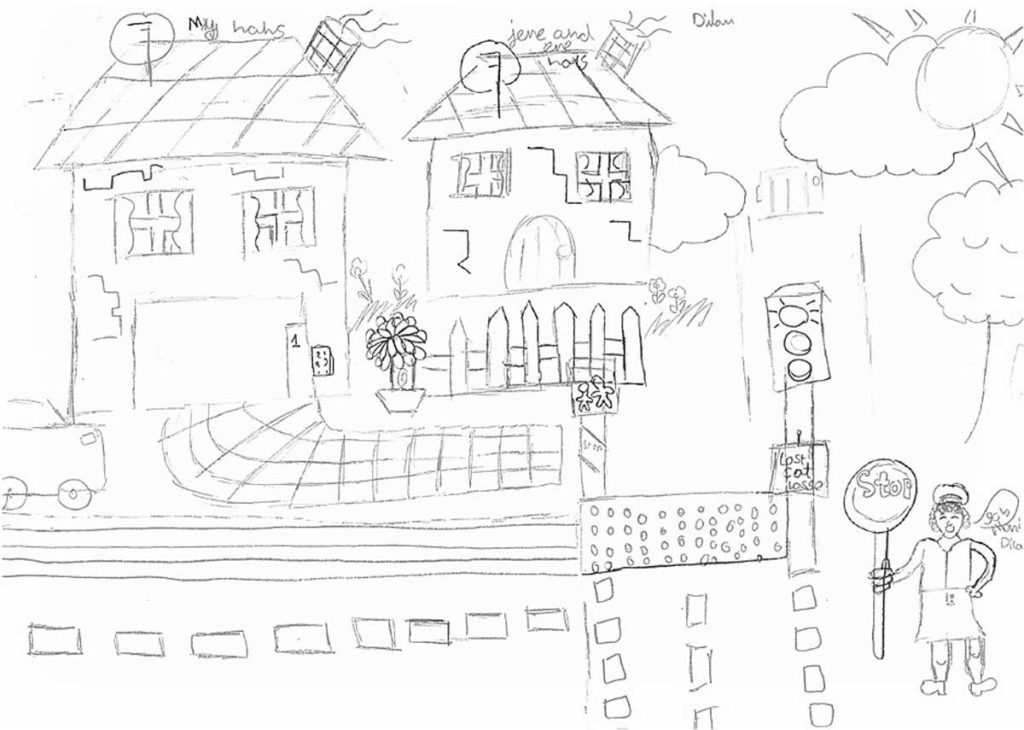The vision for the book coincides with APiC’s vision to enhance opportunities for children in their built environments for play and pedagogy (the method and practice of teaching) through their participation in creation of spaces. In doing so Place, Pedagogy and Play brings together researchers and practitioners from diverse disciplines who work on children’s environments and connects landscape architecture with planning, education, health and psychology. The book also offers global perspectives from the global North and South, including China, Bangladesh, Estonia and Sweden.
The idea of the book came from discussions between Matluba and her colleagues in Edinburgh University. They recognised that everyone had the same aims – designing better environments for and with children – but were talking about it differently. That led to the organisation of an international conference on Researching with and for Children: Place, Pedagogy and Play that brought together academics and practitioners working towards creating child friendly environments and cities.
So, it seemed the perfect opportunity to steer the ground-breaking research presented in the conference. The contributions from selected presenters in the conference were complemented with pioneering research from recognised scholars in the field. The contributions are organised in three sections: ‘Place and Play’, ‘Place and Pedagogy’ and ‘Place and Participation’.
The book tackles the important issue of children spending less and less time outdoors. This is despite growing evidence of the positive impacts of nature on children’s play, learning, health and well-being. The connection between place and play is well-established in research yet linking place with pedagogy is largely overlooked. To date, few attempts have been taken to link Place with both Pedagogy and Play in discussion within the same book. The outbreak of the COVID-19 pandemic has forced policy makers to look into the opportunities outdoor pedagogy may offer. But just how much of that debate and discussion has gone into practice?

Matluba discusses methods to evaluate school ground’s design for play and pedagogy as she applied in her co-designed school ground project with children (source: Matluba Khan)
Play is fundamental to children’s development, yet children have severely limited access to green spaces and opportunities for play in and outside of school. As the place where children spend much of their time, we believe schools should support their development by offering ample and diverse opportunities for play. ‘All work and no play’ is the motto in many cultures where play is not valued as a constructive activity.
Mental health experts and play advocates have urged schools to prioritise play as they reopen following COVID-19 closures, to help alleviate children’s stress and anxiety about lockdown. The ‘Place and Play’ section of the book discusses the importance of play, relationship of play with learning and creativity and how the design of built environment can facilitate that in nurseries, schools and neighbourhoods.
It is difficult to distinguish between learning and play in young children. However, teachers can bring ‘play’ in their ‘pedagogy’ by incorporating playful activities in curricular learning. Despite a flurry of useful resources on playful pedagogy, the practice is limited. There are many reasons behind this, such as a lack of training and confidence on part of the teachers, a lack of adequate resources, or a poorly designed outdoor environment that doesn’t allow for these opportunities. Place, Pedagogy and Play has responses to these issues, along with information about how the design of outdoor environments and outdoor pedagogy can boost motivation and address pressing policy concerns like the attainment gap.
As well as exploring children’s participation in the design of places, it also explores how they can be involved in designing their teaching. Place, Pedagogy and Play adopts a rights-based approach in arguing that every child has the right to express their opinions in matters that affect them, and have these opinions listened to by policymakers. ‘Place and Participation’ discusses meaningful participation of children and how children can genuinely make a difference, instead of being included as part of a tokenistic approach.

Jenny’s chapter discusses how place affects children through engaging with 9-11 year olds in a Scottish city (source: Jenny Wood)
Place, pedagogy and play is created from a sincere effort of addressing the disciplinary silos and linking design and planning of places with associated aspects i.e. play, pedagogy and participation. However, we acknowledge this only is a small step towards the greater agenda. APiC’s expertise is bridging these kinds of gaps between academic discussions and action on the ground. APiC champions young people’s participation in society, and as a charity we will continue to create opportunities for young people to be included now and in the future.
The book is published from Routledge and is available to buy from their website. Chapter 12 of the book, which explored children’s management of green spaces in Sweden and Denmark, is open access. You can download this chapter here.
